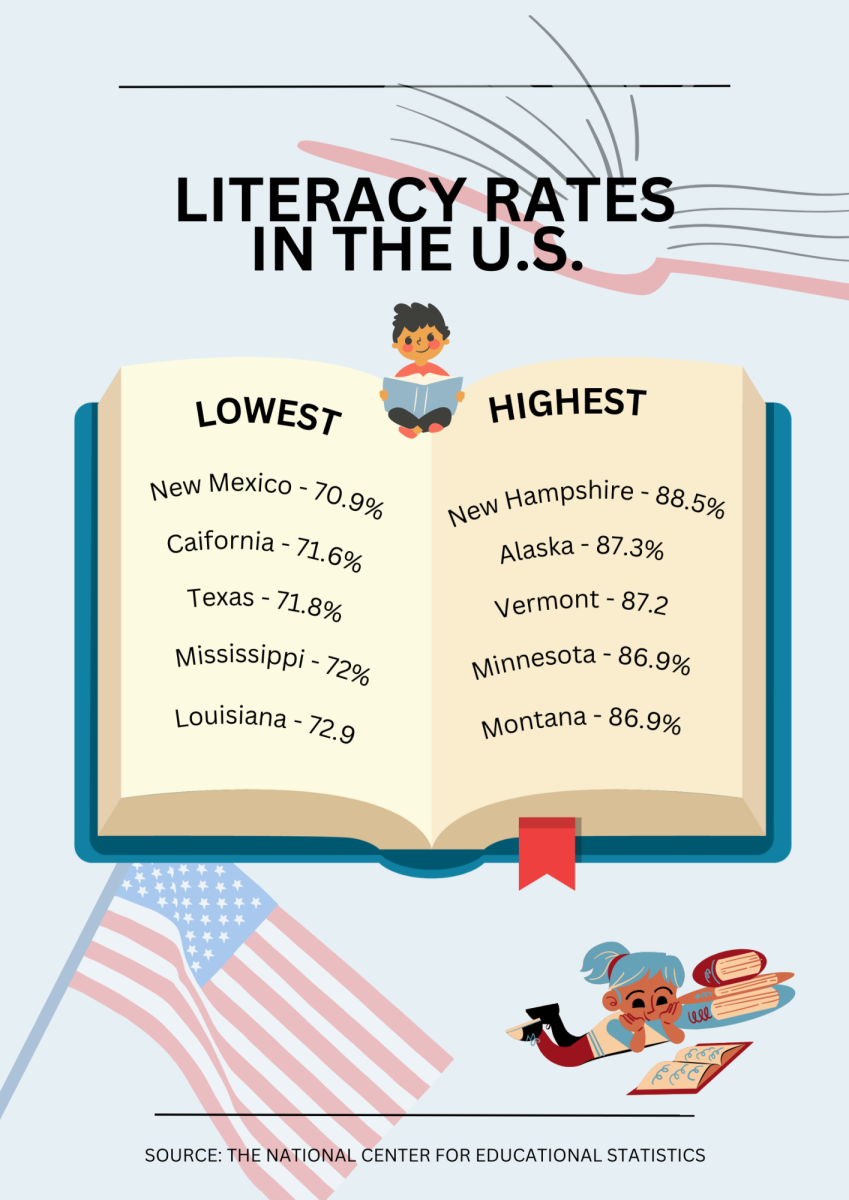A recent analysis on literacy rates in the United States shows that around 79 percent of its population is highly or moderately literate, resulting in its place as the top 50 most literate countries. When it comes to the states, though, California is ranked number 49 of 50 in terms of literacy levels.
English teacher and Dean of Academics Diana Assereto commented, “The impact [of this] is far reaching and multilayered…It means a more knowledgeable and skilled workforce.”
The literacy levels of the United States can be further broken down into individual states, the most literate of which include New Hampshire, Alaska, and Vermont.
In these states, nearly 90 percent of their populations are literate. For states like New Hampshire, for example, this can be attributed to their attention towards funding children’s education and the placement of literacy programs to make sure all citizens in such states are educated.
Citizens greatly benefit from literacy in all aspects of their lives. Economically, being literate allows them more employment opportunities–as most well-paying jobs require literacy–and subsequently more money to live a more comfortable life. It also gives citizens the ability to advocate for their own political and medical rights, allowing them to make a difference in their society and get the healthcare they need.
In addition to individual benefit, literacy also aids society as a whole. Interacting with the economy benefits its general health, having a more educated population aids their political choices, and learning about how to take care of oneself takes strain off the health system.
As Assereto summarized, “Healthier people means less stress on the healthcare system and happier citizens, which can have even more far reaching effects.”
On the other hand, states with the lowest level of literacy include New Mexico, California, and Texas, where the rates of literacy range from 70 to 75 percent. Factors related to these levels may include a large population of citizens born in another country or insufficient funding for literacy programs, which is something these states are working on implementing.
Annually, low literacy rates cost the United States over $2.2 trillion due to lack of earning and the loss of job opportunities–an issue that may worsen from the effects of the COVID-19 pandemic.
The pandemic evidently made education difficult. Assereto remarked, “…there is no denying the lockdowns, school closures, and remote learning have had a widespread negative effect on education globally[.]”
As America emerged from a brutal three years of social isolation, researchers found that around a third of its youth were missing reading benchmarks. Over 60 percent of students at lower socioeconomic schools around the country were found to be at high risk for reading problems in 2022, which was over twice as much as the year before.
To combat the issue of illiteracy, the U.S. Department of Education instituted programs such as the No Child Left Behind program, which ended in 2015, to help students reach their required reading levels.
Literacy is as important as ever in today’s society, which is why efforts to improve it are essential.
Or, as Alexandra O’Neil ’25 stated, “Literacy is important because reading is critical to everyday life.”







